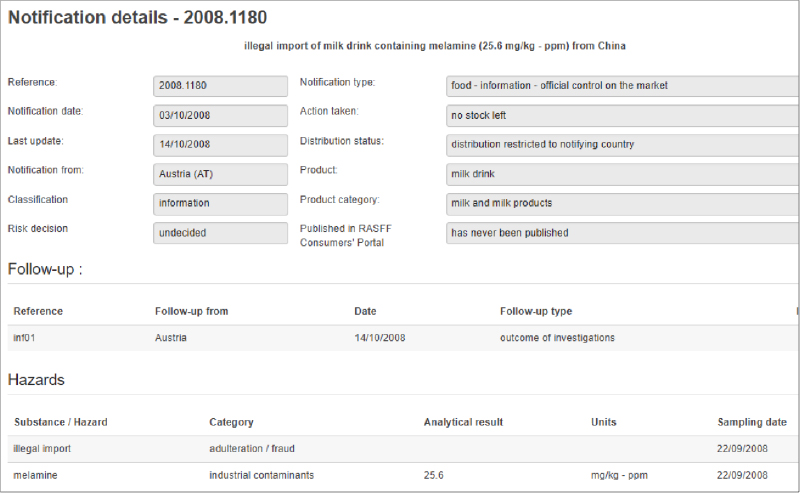
Tag Archives: spices


Food And Drug Fraud, As Old As Humanity

In all of human history, adulteration and fraud followed closely in the footsteps of new products, and herbs, spices and drugs are no exception. Even 2000 years ago, Pliny the Elder described adulteration. In ancient Athens, inspectors monitored the authenticity of wine. Scientific methods were first applied by Archimedes, and started to be utilized more by the end of the 17th century. In the 1850s, heightened public awareness and the demand for higher product quality raised anti-adulteration movements and increased enforcement.
Resource
1. Foster, S. (2011). “A Brief History of Adulteration of Herbs, Spices, and Botanical Drugs”. American Botanical Council.

Fraud Detection Coordination Across the Nations

Spices and herbs are sourced at a rate of 300,000 tons into the EU from places around the world, and fraudulent activity can happen in any steps along the supply chain. The European Commission’s control plan investigated nearly 2,000 samples of herbs and spices commonly targeted for fraud, such as oregano, cumin, turmeric, paprika, pepper and saffron, and found oregano to be the most manipulated, usually by the addition of olive leaves. Overall, the rate of 17% fraudulent products was down compared to other studies.
Resource
- Maquet, A., et al. (2021) “Results of an EU wide coordinated control plan to establish the prevalence of fraudulent practices in the marketing of herbs and spices”. European Commission Joint Research Centre Publications Repository.

Spice Up Your Pizza…with Olive Leaves

Who wants shredded olive leaves on their pizza instead of oregano? Herbs and spices keep being a target for food fraud, a European Commission study that analyzed nearly 1,900 samples revealed. The study showed that about 20% of herbs and spices are manipulated, with oregano leading the top of the list, followed by spices that include pepper, cumin, curcuma, saffron and paprika. Europe is a leading importer of herbs and spices at 300,000 tons a year. The entire supply chain from country of origin, processing, packaging, importing to distribution, is potentially vulnerable to fraud. In most cases, undeclared plant material was added, and sometimes toxic dyes were found—and these are detrimental to human health.
Resource
- Food Processing. (December 1, 2021). “EU study reveals herb and spice food fraud.”

It’s in Their DNA
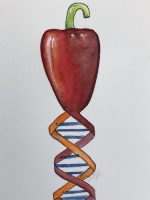
Spices have been an ongoing hot target for fraudulent activity, whether it is the addition of inedible substances like dyes, or bulking agents, such as brick powder, other plant material, sawdust and many other, potentially hazardous substances. A relatively new technology, next-generation sequencing (NGS), enables to analyze the DNA of complex samples such as spices and herbs. The DNA findings are compared to a database and allow to detect many thousands of species in one test. Currently, working groups are developing standardized methods for such authenticity tests.
Resource
- Woolfe, M. (July 13, 2021). “NGS (Next Generation Sequencing) is Helping to Prevent Fraud in the Herb and Spice Trade”. Food Authenticity Network.

The Golden Goose, A Timeless Moneymaker

Grimm’s Fairy Tale got it right after all: The “Golden Donkey” (German expression for “Golden Goose”) does indeed exist. In India, officials shut down a factory producing fake turmeric, chili powder and other spices and condiments. Authorities confiscated mostly inedible and hazardous ingredients, which included man-made pigments and colorants, acids, hay and last but not least, donkey dung. The health impact and where the “spices” were sold in retail are under investigation.
Resource
- Mishra, S. (December 16, 2020). “Police raid factory making counterfeit spices ‘out of donkey dung and acid’”. Independent.

Food Authenticity: 2020 in Review
It is fair to say that 2020 was a challenging year with wide-ranging effects, including significant effects on our ongoing efforts to ensure food integrity and prevent fraud in the food system. COVID-19 caused major supply chain disruptions for foods and many other consumer products. It also highlighted challenges in effective tracking and standardization of food fraud-related data.
Let’s take a look at some of the notable food fraud occurrences in 2020:
- Organic Products. The Spanish Guardia Civil investigated an organized crime group that sold pistachios with pesticide residues that were fraudulently labeled as organic, reportedly yielding €6 million in profit. USDA reported fraudulent organic certificates for products including winter squash, leafy greens, collagen peptides powder, blackberries, and avocados. Counterfeit wines with fraudulent DOG, PGI, and organic labels were discovered in Italy.
- Herbs and Spices. Quite a few reports came out of India and Pakistan about adulteration and fraud in the local spice market. One of the most egregious involved the use of animal dung along with various other substances in the production of fraudulent chili powder, coriander powder, turmeric powder, and garam masala spice mix. Greece issued a notification for a turmeric recall following the detection of lead, chromium, and mercury in a sample of the product. Belgium recalled chili pepper for containing an “unauthorized coloring agent.” Reports of research conducted at Queen’s University Belfast also indicated that 25% of sage samples purchased from e-commerce or independent channels in the U.K. were adulterated with other leafy material.
- Dairy Products. India and Pakistan have also reported quite a few incidents of fraud in local markets involving dairy products. These have included reports of counterfeit ghee and fraudulent ghee manufactured with animal fats as well as milk adulterated with a variety of fraudulent substances. The Czech Republic issued a report about Edam cheese that contained vegetable fat instead of milk fat.
- Honey. Greece issued multiple alerts for honey containing sugar syrups and, in one case, caramel colors. Turkey reported a surveillance test that identified foreign sugars in honeycomb.
- Meat and Fish. This European report concluded that the vulnerability to fraud in animal production networks was particularly high during to the COVID-19 pandemic due to the “most widely spread effects in terms of production, logistics, and demand.” Thousands of pounds of seafood were destroyed in Cambodia because they contained a gelatin-like substance. Fraudulent USDA marks of inspection were discovered on chicken imported to the United States from China. Soy protein far exceeding levels that could be expected from cross contamination were identified in sausage in the Czech Republic. In Colombia, a supplier of food for school children was accused of selling donkey and horse meat as beef. Decades of fraud involving halal beef was recently reported in in Malaysia.
- Alcoholic Beverages. To date, our system has captured more than 30 separate incidents of fraud involving wine or other alcoholic beverages in 2020. Many of these involved illegally produced products, some of which contained toxic substances such as methanol. There were also multiple reports of counterfeit wines and whisky. Wines were also adulterated with sugar, flavors, colors and water.
We have currently captured about 70% of the number of incidents for 2020 as compared to 2019, although there are always lags in reporting and data capture, so we expect that number to rise over the coming weeks. These numbers do not appear to bear out predictions about the higher risk of food fraud cited by many groups resulting from the effects of COVID-19. This is likely due in part to reduced surveillance and reporting due to the effects of COVID lockdowns on regulatory and auditing programs. However, as noted in a recent article, we should take seriously food fraud reports that occur against this “backdrop of reduced regulatory oversight during the COVID-19 pandemic.” If public reports are just the tip of the iceburg, 2020 numbers that are close to those reported in 2019 may indeed indicate that the iceburg is actually larger.
Unfortunately, tracking food fraud reports and inferring trends is a difficult task. There is currently no globally standardized system for collection and reporting information on food fraud occurrences, or even standardized definitions for food fraud and the ways in which it happens. Media reports of fraud are challenging to verify and there can be many media reports related to one individual incident, which complicates tracking (especially by automated systems). Reports from official sources are not without their own challenges. Government agencies have varying priorities for their surveillance and testing programs, and these priorities have a direct effect on the data that is reported. Therefore, increases in reports for a particular commodity do not necessarily indicate a trend, they may just reflect an ongoing regulatory priority a particular country. Official sources are also not standardized with respect to how they report food safety or fraud incidents. Two RASFF notifications in 2008 following the discovery of melamine adulteration in milk illustrate this point (see Figure 1). In the first notification for a “milk drink” product, the hazard category was listed as “adulteration/fraud.” However, in the second notification for “chocolate and strawberry flavor body pen sets,” the hazard category was listed as “industrial contaminants,” even though the analytical result was higher.1
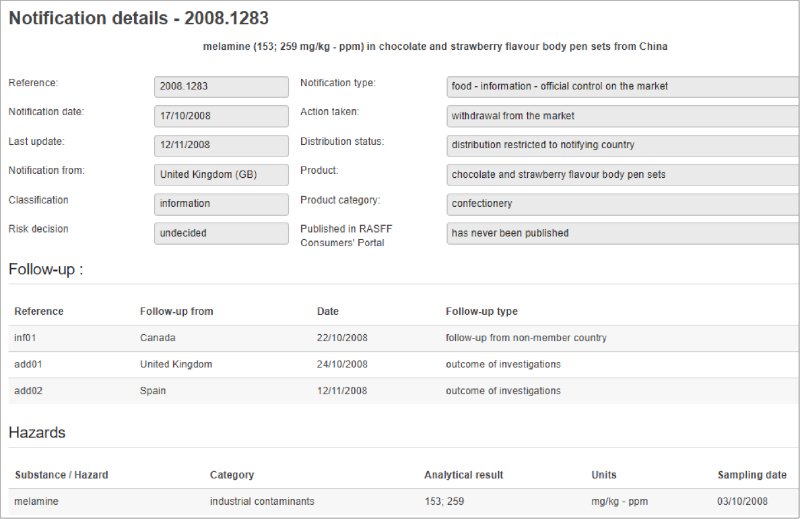
What does all of this mean for ensuring food authenticity into 2021? We need to continue efforts to align terminology, track food fraud risk data, and ensure transparency and evaluation of the data that is reported. Alignment and standardization of food fraud reporting would go a long way to improving our understanding of how much food fraud occurs and where. Renewed efforts by global authorities to strengthen food authenticity protections are important. Finally, consumers and industry must continue to demand and ensure authenticity in our food supply. While most food fraud may not have immediate health consequences for consumers, reduced controls can lead to systemic problems and have devastating effects.
Reference
- Everstine, K., Popping, B., and Gendel, S.M. (2021). Food fraud mitigation: strategic approaches and tools. In R.S. Hellberg, K. Everstine, & S. Sklare (Eds.) Food Fraud – A Global Threat With Public Health and Economic Consequences (pp. 23-44). Elsevier. doi: 10.1016/B978-0-12-817242-1.00015-4

Adulteration of Botanical Ingredients
Botanical ingredients are important to the food and beverage industries as well as the dietary supplements industry. Botanicals are plants or specific plant parts (leaves, roots, bark, berries, etc.) that are used for particular properties. These properties can be therapeutic or related to color, flavor or other attributes. Botanicals include extracts such as Ginkgo biloba, saw palmetto, and elderberry as well as herbs and spices used in cooking, essential oils, pomegranate juice and extracts, and olive oil. There is a substantial overlap between botanical products used in the herb and supplement industries and those used in foods and beverages. Many “conventional” foods and beverages include botanical extracts or other ingredients to advertise a therapeutic effect.
In 2014, FDA issued a final guidance for industry related to labeling of liquid dietary supplements (vs. beverages). FDA noted, in their rationale for the guidance, two trends:
“First, we have seen an increase in the marketing of beverages as dietary supplements, in spite of the fact that the packaging and labeling of many liquid products represent the products as conventional foods. Products that are represented as conventional foods do not meet the statutory definition of a dietary supplement…and must meet the regulatory requirements that apply to conventional foods.
Second, FDA has seen a growth in the marketplace of beverages and other conventional foods that contain novel ingredients, such as added botanical ingredients or their extracts. Some of these ingredients have not previously been used in conventional foods and may be unapproved food additives. In addition, ingredients that have been present in the food supply for many years are now being added to beverages and other conventional foods at levels in excess of their traditional use levels or in new beverages or other conventional foods. This trend raises questions regarding whether these ingredients are unapproved food additives when used at higher levels or under other new conditions of use. Some foods with novel ingredients also bear claims that misbrand the product or otherwise violate the FFDCA.”
The American Botanical Council (ABC) has been publishing information on the safe, responsible and effective use of botanicals since 1988, including the quarterly journal HerbalGram and a book of herb monographs The ABC Clinical Guide to Herbs. In order to help combat the increasing problem of adulteration in the industry, the Botanical Adulterants Prevention Program (BAPP) was launched in 2010 by ABC along with the American Herbal Pharmacopeia and the University of Mississippi National Center for Natural Products Research. The goal of BAPP is to educate members of the herbal and dietary supplement industry about ingredient and product adulteration through the publication of documents such as adulteration bulletins and laboratory guidance documents. The information in these documents helps ensure the identity, authenticity and safety of botanicals along the supply chain.
Karen Everstine will be discussing food fraud during the 2020 Food Safety Consortium Virtual Conference Series | An example of the Botanical Adulterants Prevention Bulletin for cranberry is seen in Figure 1. It includes a description of the species that can be labeled as cranberry in the United States, a brief description of the marketplace, information on potential adulterants in cranberry fruit extract and other cranberry products, and guidance on analytical methods to test cranberry products for adulteration.
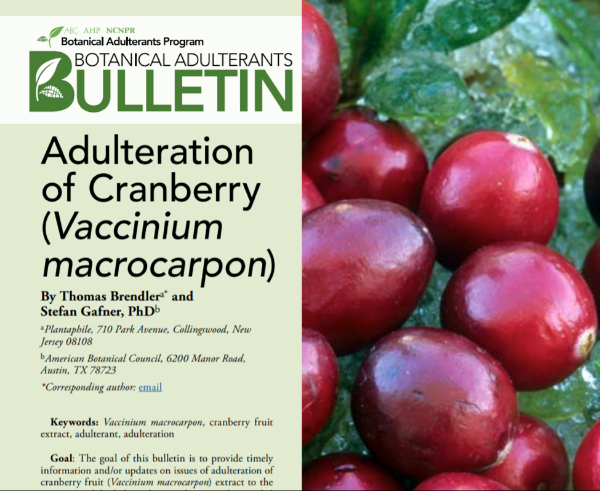
Decernis has been working with the Botanical Adulterants Prevention Program (BAPP) to integrate links to their expert content into the Food Fraud Database (FFD). This will ensure our users can better develop ingredient specifications, manage risk, and protect their consumers by leveraging this content for food fraud and herbal ingredient fraud prevention. We are currently incorporating three types of BAPP documents into FFD:
- Adulterants Bulletins. Information and links to these documents will be entered as Inference records in FFD. We are extracting ingredient and adulterant names (including Latin names as synonyms) from the document, assigning “Reasons for Adulteration,” and providing a link to the full document on the BAPP website.
- Adulteration Reports. Information and links to these documents will also be entered as Inference records in FFD. We are extracting ingredient and adulterant names from the document, assigning “Reasons for Adulteration,” and providing a link to the full document on the BAPP website.
- Laboratory Guidance documents. Information and links to these documents will be entered as both method record and inference records in FFD. We are extracting ingredient and adulterant names from the document, assigning “Reasons for Adulteration,” and providing a link to the full document on the BAPP website.
Decernis analysts are currently integrating this content into FFD, which will be uploaded to the system between now and early September.

Fraud Is the Spice Of Life
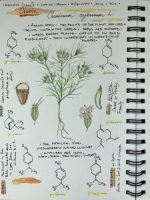
The high value of spices makes them one of the most popular targets for intentional adulteration. Researchers in Brazil developed an efficient method for fraud detection: Near-infrared spectrometer (NIR) associated with chemometrics. This method is able to detect adulterants like corn flour and cassava in spice samples, revealing a high rate of adulteration, between 62% for commercial black pepper and 79% for cumin samples.
Resource
- Amanda Beatriz Sales de Lima et al. (January 2020). “Fast quantitative detection of black pepper and cumin adulterations by near-infrared spectroscopy and multivariate modeling”. Food Control. Vol. 107.

How Not To Spice Up Your Life

Image credit: Susanne Kuehne.
Spices claim high prices and are a popular target for food fraud. The Khyber Pakhtunkhwa (KP) Food Autority discarded 5,000 kg of adulterated spices in a Pakistan, and legal action will be taken against the perpetrators. The fraudulent additions included inedible items and unauthorized food colors.
Resource
1. Fahad Shabbir, UrduPoint (December 10, 2019). “KP Food Authority Discarded 5,000 Kg Adulterated Spices”. Pakistan Point News.




